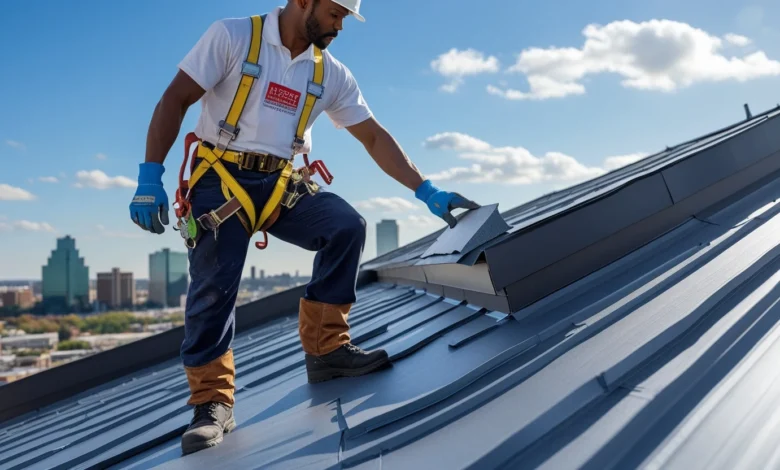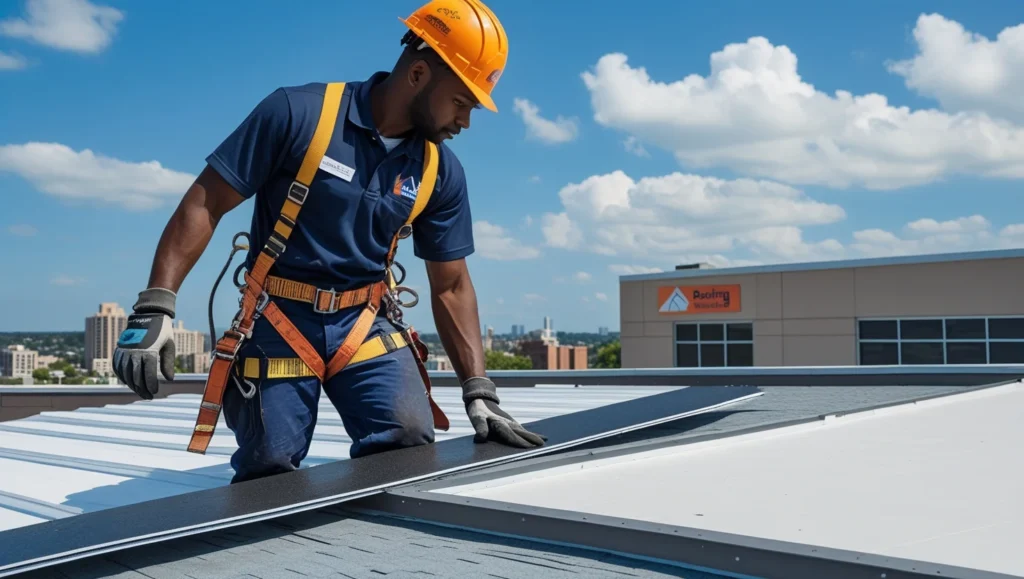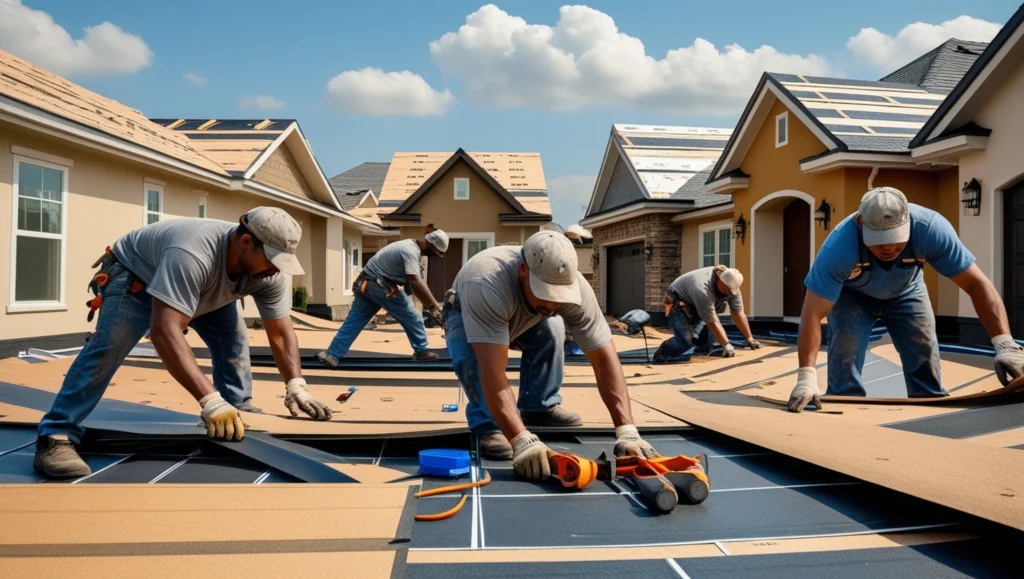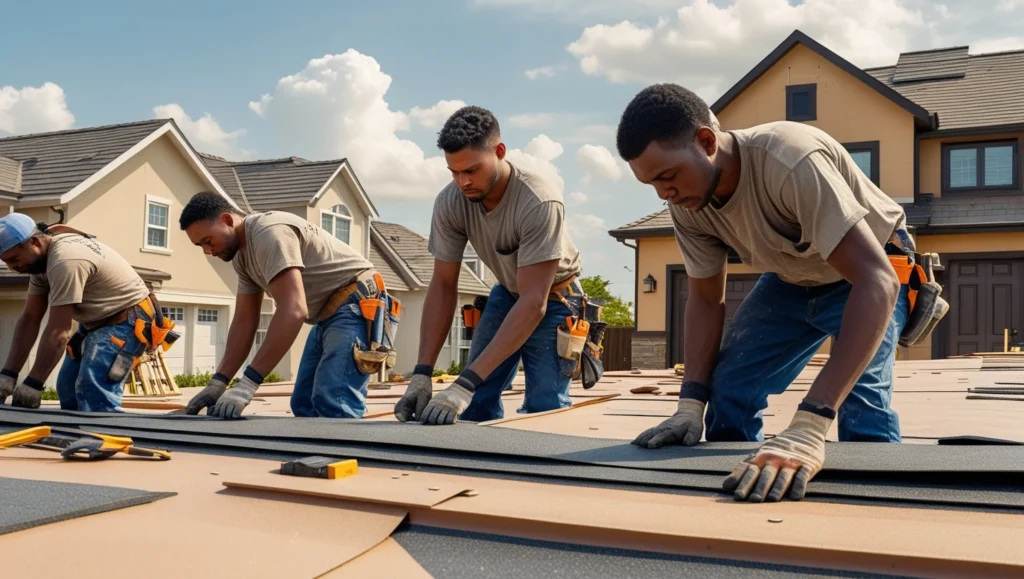Roofing Cop Reviews That Prove Trust, Quality, and Reliability

Imagine your home as a castle. The roof is its crown. But what keeps water from sneaking in at the edges? That’s where a roofing cop comes in. A roofing cop is like a guard for your roof’s walls. It sits on top of parapet walls or edges. It stops rain from causing damage. Many homes have flat roofs or low walls. Without a good roofing cop, leaks can happen.
It leads to big repair bills. In fact, roof leaks cause water damage in many houses each year. According to experts, one in 50 homeowners files a claim for this. It also makes your roof look nice. In this article, we dive into it.
We’ll cover what they are, why you need one, and how to get it right. Whether you’re building new or fixing old, understanding boosts your home’s safety. Let’s explore how this simple part plays a big role in safety standards and compliance.
What Is a Roofing Cop?
A roofing cop is a cover for the top of a wall on your roof. It protects against water. Think of it as a hat for the wall. It keeps the rain from going inside. Most roofing are made from metal, stone, or concrete. They slant to let water run off. This stops leaks and mold.
Why do we use them? Roofs with parapet walls need extra care. Parapet walls are short walls around flat roofs. Without a roofing, water sits and seeps in. It can rot wood or crack bricks. Roofing cop building codes often require them. For example, in many places, codes say parapet walls must have coping.
It come in different shapes. Some are flat. Others have curves. They fit homes, stores, or big buildings. If you search for “roofing cop near me,” you’ll find local pros who know these rules. A good roofing cop meets legal requirements. It ensures your roof lasts longer.
In short, it is a key for dry homes. It guards edges like a cop on duty. Next, let’s see its benefits.
The Benefits of a Good Roofing Cop
A roofing cop does more than cover a wall. It saves money. How? By stopping leaks early. Leaks from poor edges are common. Roof edges are a top spot for water issues. Experts say damaged edges cause many roof problems.
One big benefit is durability. A strong roofing handles wind and rain. In tests, good cops resist high winds. This is from standards like ES-1. These rules check if roofing stay put in storms.
Another plus is looks. A nice roofing adds style. It can match your home’s color. This boosts curb appeal. Home buyers like well-kept roofs.
Safety is huge, too. Wet walls can slip or fall. It keeps things dry. It follows safety standards. This prevents accidents.
Stats show value. The Insurance Information Institute notes water damage claims hit billions yearly. Roof leaks top the list. A roofing cop cuts that risk. It also raises home value. Real estate pros say good roofs sell faster.
For businesses, a roofing compliance check is vital. It avoids fines. Overall, investing in a roofing pays off. It protects your space from weather woes.

Types of Roofing Cops to Choose From
Roofing vary by material. Each type fits different needs. Let’s break it down.
First, metal roofing cops. These are popular. Made from aluminum or steel. They last long. Metal resists rust if coated. Great for modern homes. They bend to fit curves.
Next, stone coping. Often called coping stones. These are heavy and strong. Made from sandstone or limestone. They look classic. Good for old-style houses. Stone roofing cops handle cold weather well.
Concrete ones are affordable. Cast in molds. They mimic stone but cost less. Easy to paint. Ideal for big projects like roof replacement.
Wood is rare but cozy. Used in rustic spots. Needs treatment to avoid rot.
Porcelain is new. It’s smooth and waterproof. Low upkeep. Fits fancy designs.
When picking, think of the climate. Hot areas need heat-resistant types. Check the roofing cop certification for quality. Ask for reviews from users. It helps find the best fit.
Mix types for custom looks. A pro can advise on roofing services.
How to Install a Roofing Cop Properly
Installing a roofing takes care. Do it wrong, and leaks happen. Start with clean walls. Remove old stuff.
Measure the wall top. Cut coping to fit. Use tools like saws for stone.
Apply adhesive. For metal, use clips. Stone needs mortar. Slope it outward. This lets water drain.
Secure edges. Add flashing below. This seals gaps.
For safety, wear gloves. Use ladders correctly. Follow the building codes.
Hire pros for big jobs. Search “roofing cop near me” for local help. They have a roofing cop contractor license.
Time for dry days. Wet weather ruins bonds.
Test after. Pour water to check runoff. Fix issues fast.
Good install meets inspection standards. It lasts for years. Avoid DIY if unsure. Pros ensure compliance check.

Maintenance Tips for Long-Lasting Roofing Cops
Keep your roofing cop in top shape. Check it twice a year. Look for cracks or loose parts.
Clean debris. Leaves block drains. Use a soft brush.
Fix small issues early. Seal cracks with caulk. For stone, use mortar.
In winter, clear ice. It can crack materials.
Paint metal ones if needed. This stops rust.
Watch for signs of wear. Discolor or water marks mean trouble.
Hire for roofing inspection. Pros spot hidden problems.
Follow maker tips. Some need special care.
Good maintenance avoids roofing scam protection worries. Shady fixes cost more.
Stats show that maintained roofs last 20% longer. Invest time for savings.
Your roofing cop professional team can help. They offer roofing cop services.
Typical Problems Regarding Roofing Cops
People mess up with it often. One error is the wrong size. Measure twice.
Another is a bad slope. Flat coping holds water. Always tilt out.
Ignoring codes is risky. Check the legal requirements first.
Using cheap materials fails fast. Pick quality for certification.
Skipping flashing causes leaks. Always add it.
DIY without skills leads to issues. Hire roofing cop local contractors if needed.
Not checking the weather. Install in dry times.
Forgetting maintenance shortens life.
To avoid, plan. Read reviews. Ask experts.
Avoid scams. Check the roofing cop contractor license. Get quotes.
Real case: A home had leaks from a poor install. Fixed with pro help. Cost less than damage.
Smart choices keep your roofing strong.

Choosing the Right Roofing Cop Company
Find a good company. Start with the search “roofing cop near me.”
Look at the reviews. Happy customers mean good work.
Check licenses. They need a roofing cop contractor license.
Ask about experience. Years in roofing cop services matter.
Get quotes. Compare prices for roof repair services.
See their team. A roofing cop professional team ensures quality.
Inquire about the warranty. Good ones cover work.
Watch for red flags. Pushy sales? Walk away. This ties to roofing cop fraud prevention.
Real example: A firm with high ratings fixed a leaky cop fast.
Choose wisely for peace. It boosts scam protection.
Local ones know area codes. They handle building codes well.
Build trust. Ask questions. Good companies answer clear.
Your pick affects roof life.
Conclusion
We’ve covered roofing cops from basics to tips. They protect edges, stop leaks, and add style. Pick the right type, install well, and maintain. Avoid mistakes and choose good pros. It keeps your home safe. Remember, a strong roofing follows standards and saves money.
If your roof needs attention, act now. Search for services today. Protect your space like a pro. Your roof thanks you.
FAQs
What is a roofing cop? To prevent water damage, a roofing cop is a protective covering for the roof walls.
How often should I inspect my roofing cop? Inspect your roofing cop twice a year for cracks or wear.
Can I install a roofing cop myself? You can try simple installs, but hire pros for the best roofing cop compliance check.
What materials are best for roofing cop? Metal or stone work well; choose based on your climate and roofing cop safety standards.
How does a roofing cop prevent scams? It ensures quality work, tying into roofing cop fraud prevention by avoiding shady fixes.
Key Citations
- Insurance Information Institute on water damage claims: https://www.iii.org/ (general reference for stats on claims).
- Carlisle SynTec on ES-1 standards: https://www.carlislesyntec.com/en/Resources/Media/Blog-Landing-Page/SpecTopics/2022/09/09/The-ES-1-Standard-and-Metal-Roof-Edges
- Roof Giant on coping stones: https://www.roofgiant.com/blog/flat-roofing-topics/what-are-coping-stones-used-for/
- Bilevel House Guide: https://bilevelhouse.com/the-ultimate-guide-to-roofing-cop/
- Five Points Roofing on common leak areas: https://fivepointsroofing.com/roofing-blog/common-places-roof-leaks/